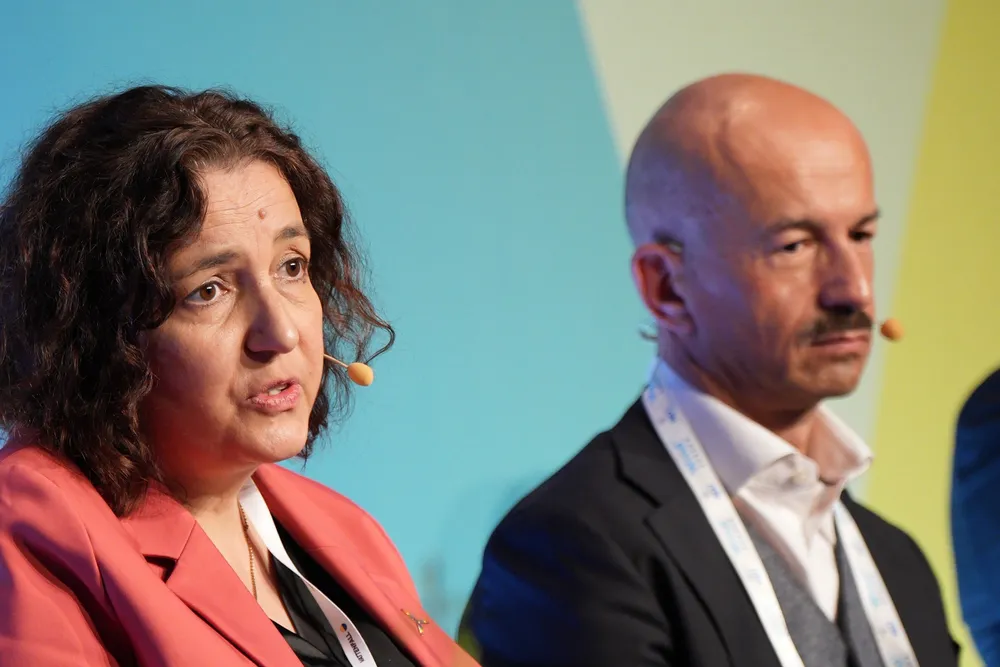'Really heavy' wake losses raising German offshore wind prices: Vattenfall chief
Germany suffering more from wind wakes than North Sea neighbours such as Denmark given its limited maritime resources, says Swedish power giant’s offshore wind chief

“Really heavy” wake losses for German offshore wind farms are pushing project power prices up above those in countries like Denmark, says a top Vattenfall executive.
Germany, especially for a country of its size and power demands, has a small exclusive economic zone to develop offshore wind farms in the North Sea and Baltic Sea – a combined total of around 33,000 square kilometres. That is less than a third of mainland Denmark, despite having a population around 13 times larger.
The fact Germany is therefore forced to squeeze offshore wind farms into smaller areas exacerbates the prospect of increasing inter-farm wind wakes going forward.
Developers like Vattenfall are being forced to “take that into our calculation,” said Jung. “That’s also why we would see levelised energy costs actually in Germany higher than, for example, in Denmark, because we have the high wake losses.”
Vattenfall’s position is that “what matters in the end” is how much power offshore wind farms produce, said Jung, “not the installed capacity.”
Does this mean that governments – especially Germany’s, with its limited maritime resources – should avoid cramming the most offshore wind turbines possible into their coastal waters?
“There is a tipping point where more gigawatts don't bring you more production compared to the costs,” said Jung, citing grid connection costs as an example. “Those calculations need to be made.”
“At least in Germany, I would think that less gigawatts would still bring more production compared to the cost.”
Asked about Vattenfall’s view on this, Jung said that, in countries where there are offshore wind development plans (naturally, Germany has a long, compound word for this, ‘Flächenentwicklungsplans’) developers must “take into account” future wake losses from other planned sites.
In these instances, she said it is the “responsibility of the developer to do the calculations” on wake losses. “We plainly need to consider the wake modelling ourselves and then it's part of the risk.”
“As long as we know where the areas are, that works well enough.”
On Norfolk Boreas pullout and 'staying nimble'
Jung, speaking before Orsted announced its Hornsea 4 halt, said that Vattenfall had realised the economics for Norfolk Boreas “clearly” didn’t work in the run-up to its 2023 decision.
Jung said her team thought that, rather than trying to plough through with Norfolk Boreas, it was better to “step out, [and] give it to someone that can continue and wants to continue with it, which was then RWE”.
Vattenfall had bid Norfolk Boreas into the UK’s 2022 Contracts for Difference auction at a time when there was a “continuous decreasing trend” in the levelised cost of energy, said Jung. She is not counting on such a trend any longer.
Orsted and Iberdrola were later able to rebid portions of projects that went through the same auction round into last year’s edition, securing better prices for their power. But Jung said that, even with that having been a potential lifeline for Norfolk Boreas, she does not regret Vattenfall's exit.
Going forward, Jung said that Vattenfall prefers to remain “flexible” in its approach to the supply chain for offshore wind projects, avoiding the framework agreements preferred by some of its competitors.
Vattenfall prefers to identify where manufacturers still have free capacity and then “match it together with the timeline of our project.” That worked well for its Nordlicht 1 and 2 offshore wind farms in Germany, for which Vattenfall took a final investment decision in March, she said.
For those wind farms, together boasting 1.6GW, the utility entered contracts with German fabricator EEW and Korean-owned turbine tower specialist CS Wind. “It really matched with when they had manufacturing capacity.”
“For us, it's more the nimble approach and then finding the sweet spots.”
(Copyright)